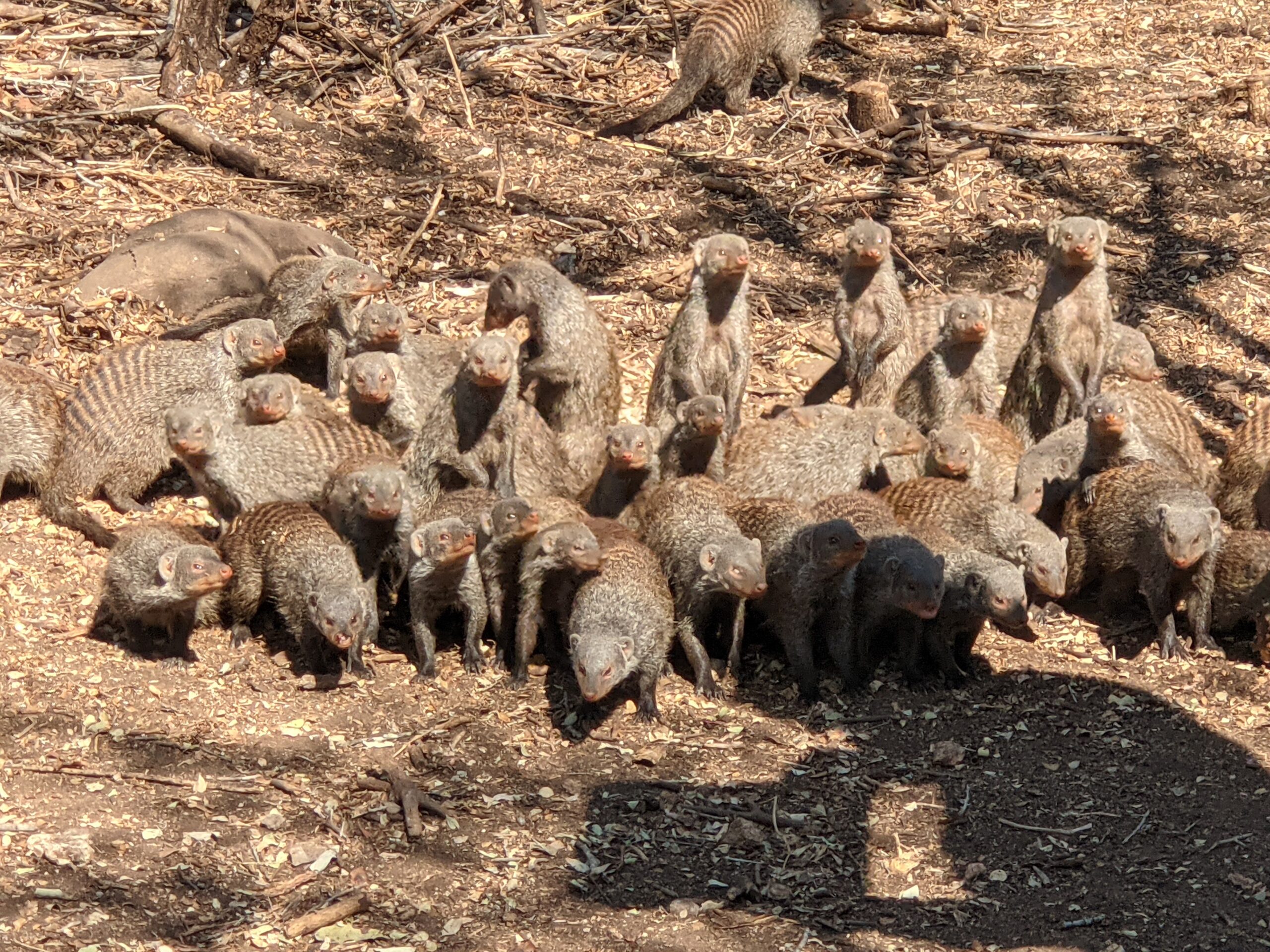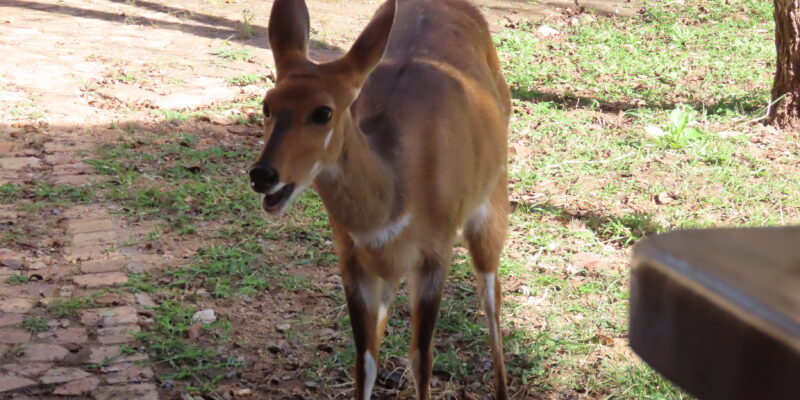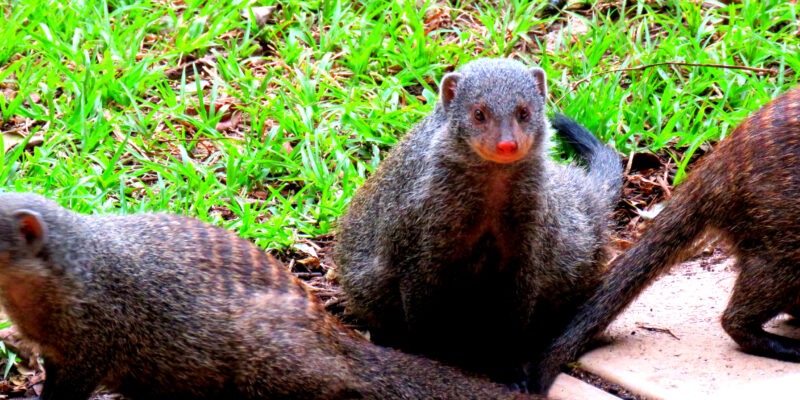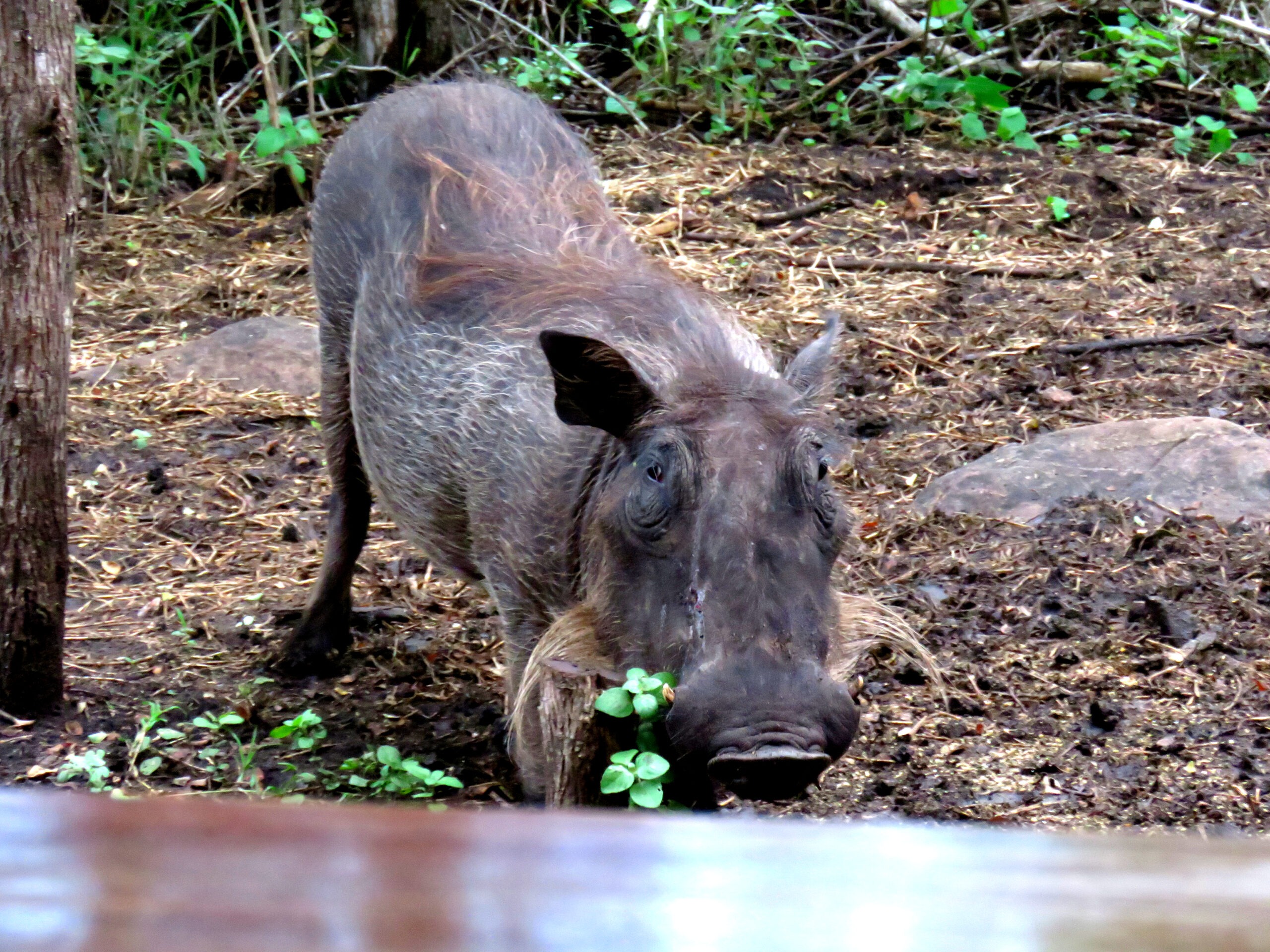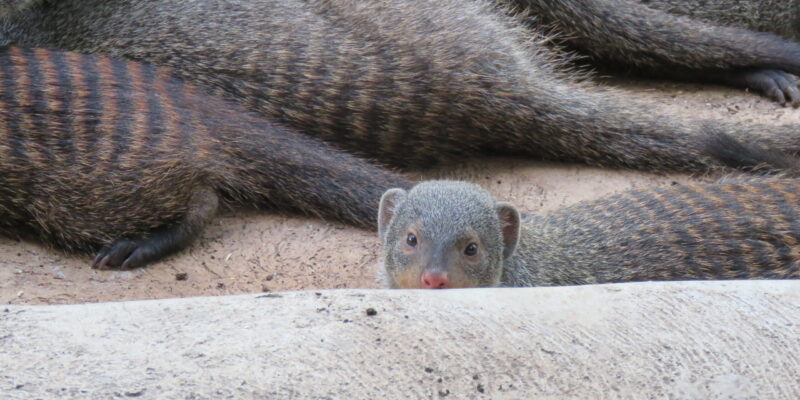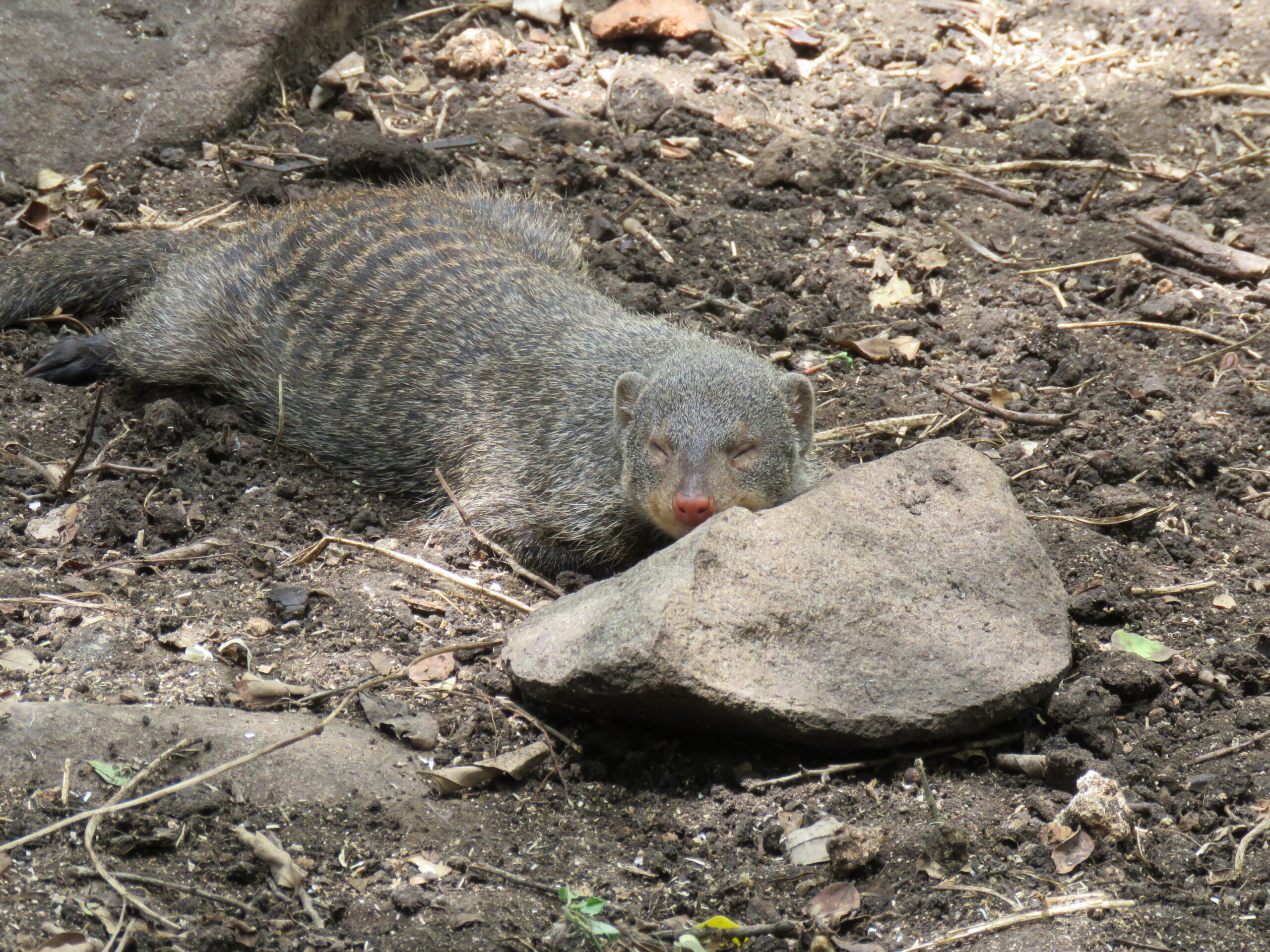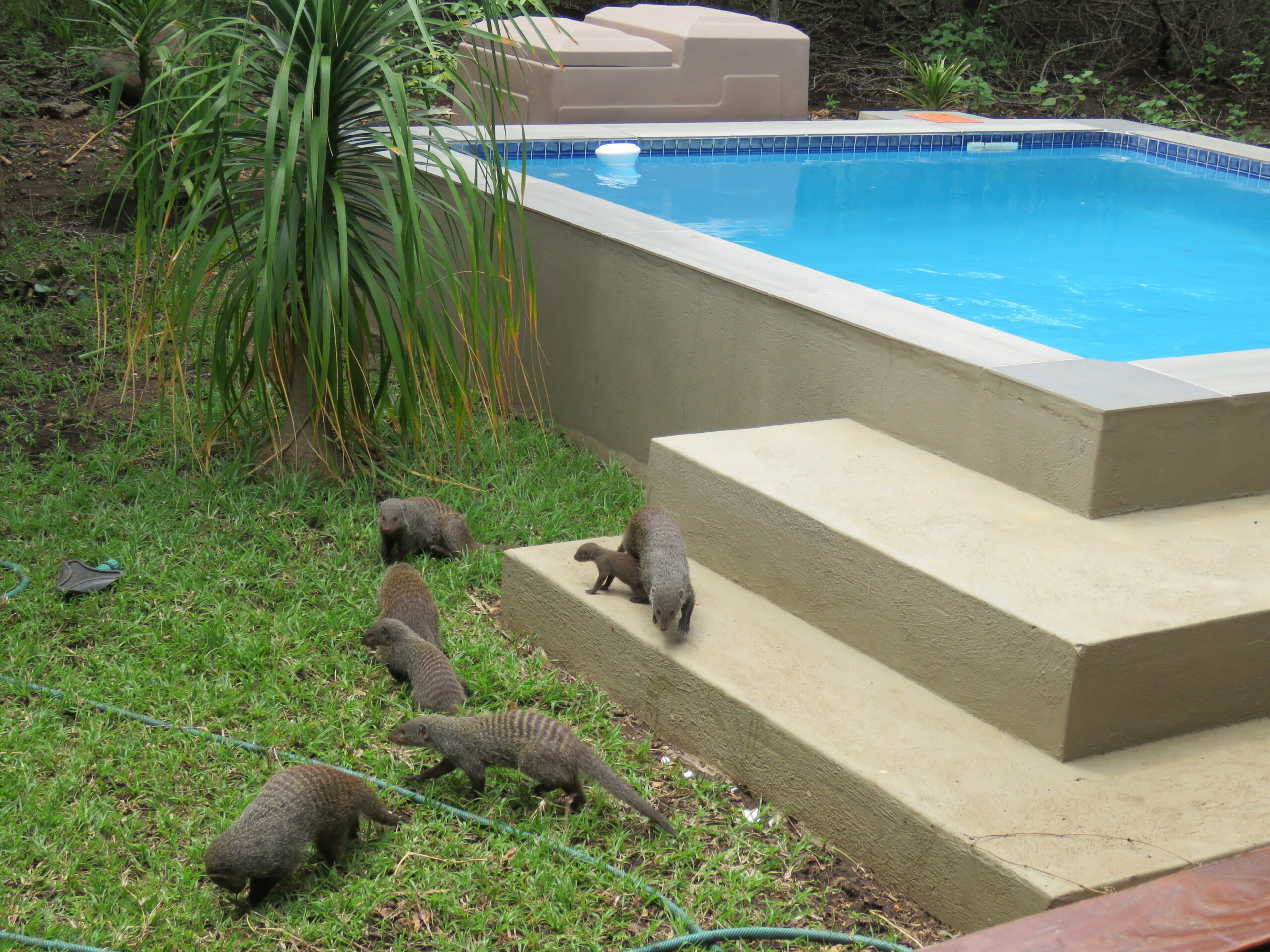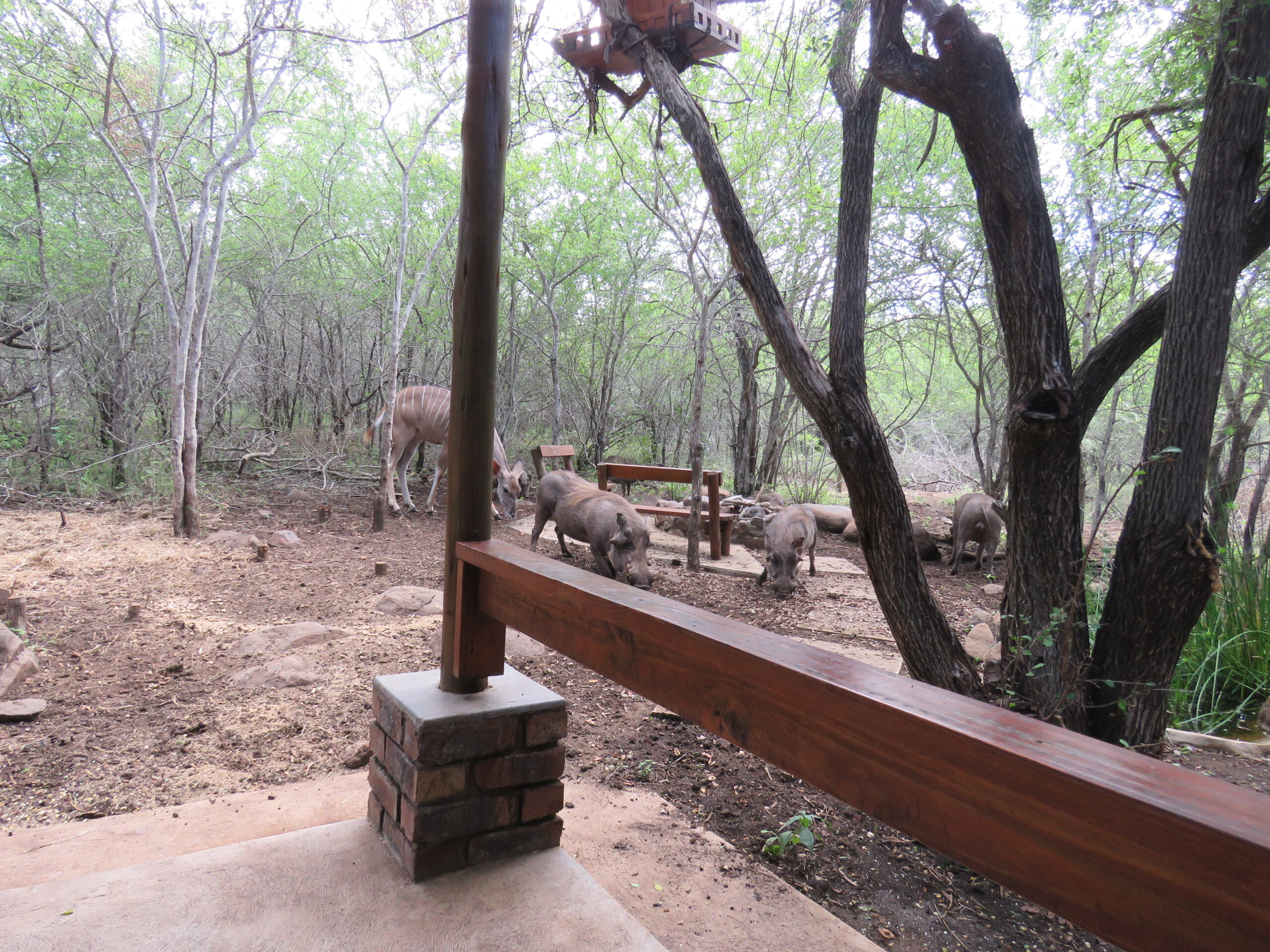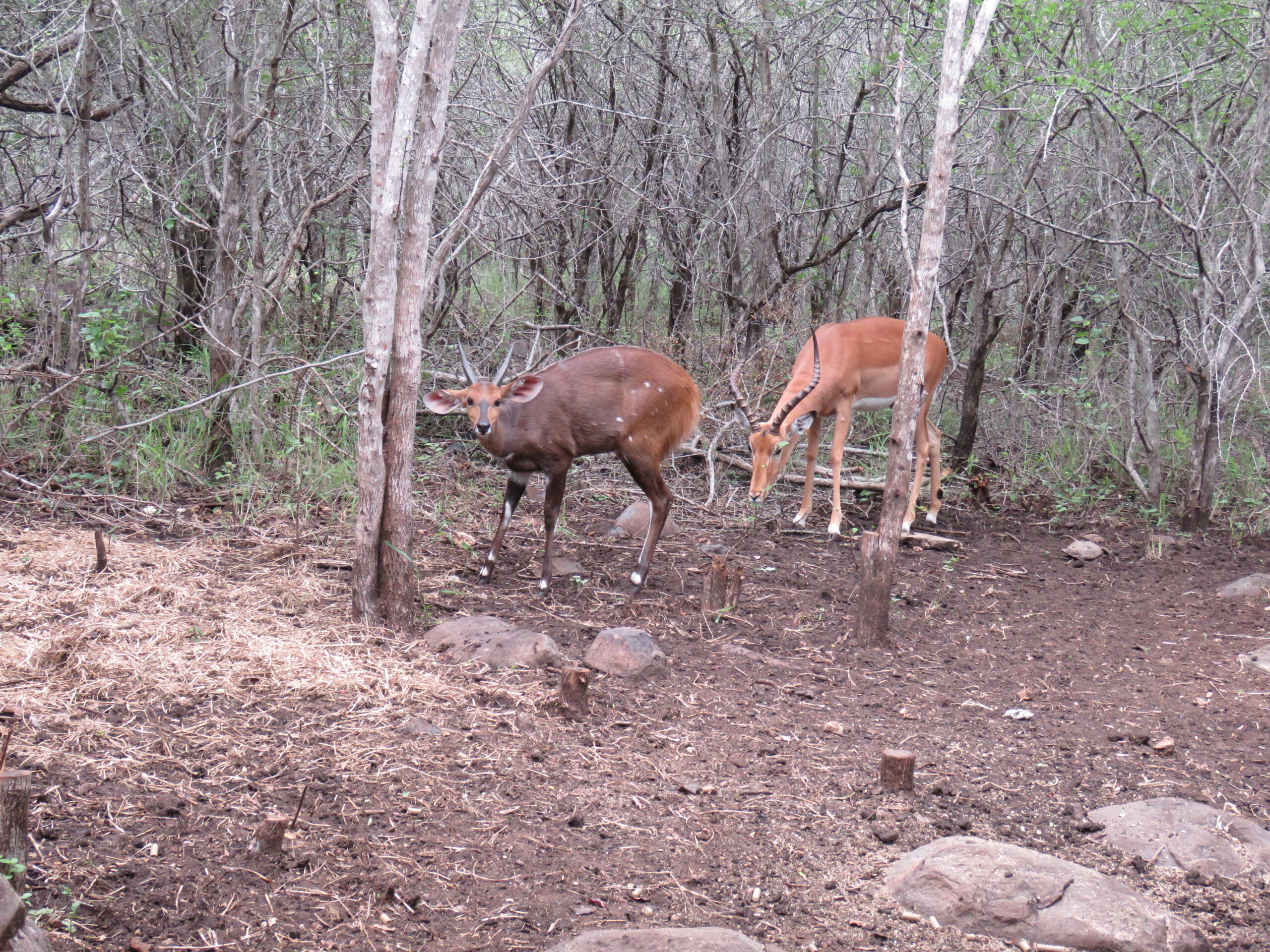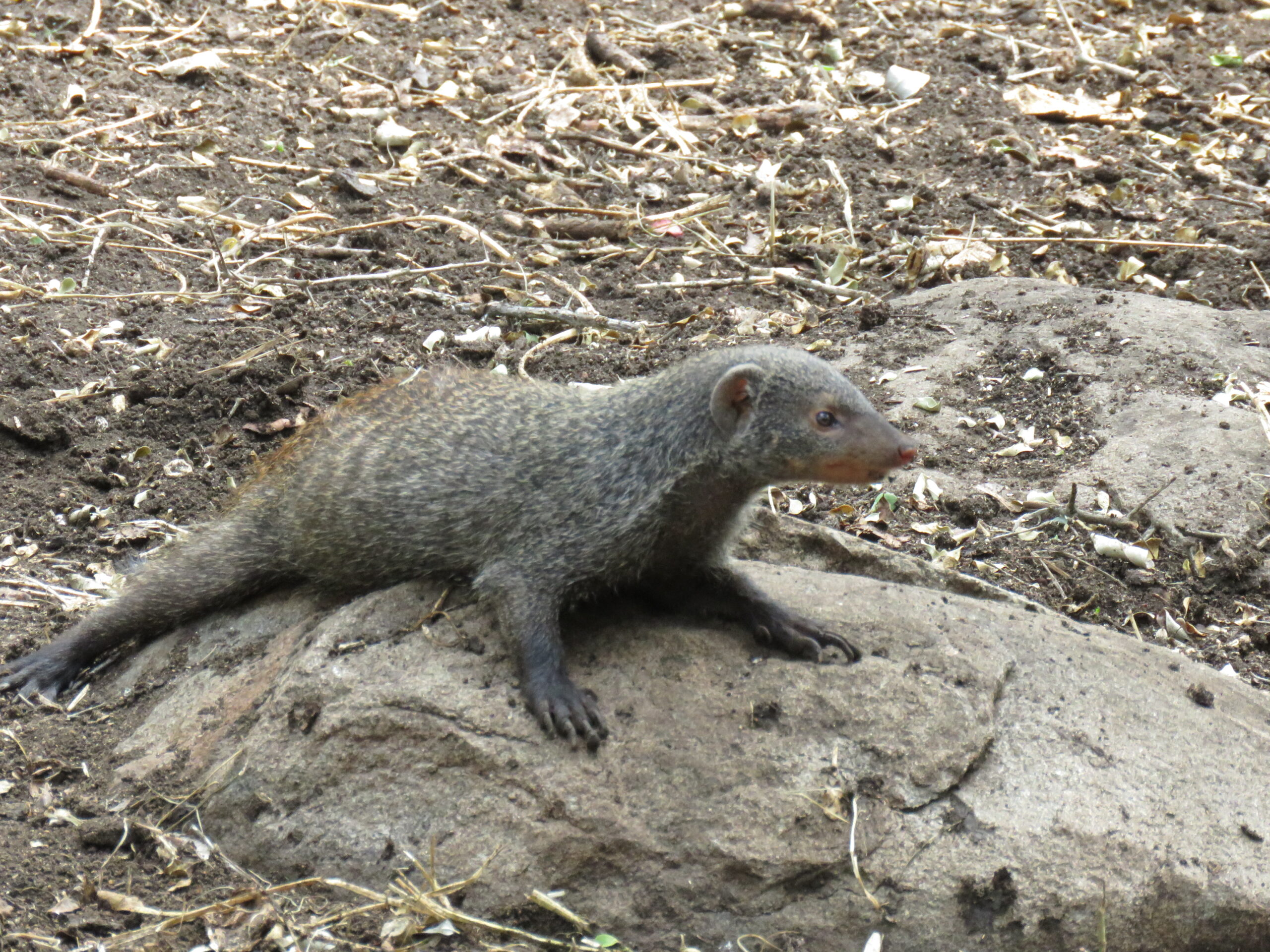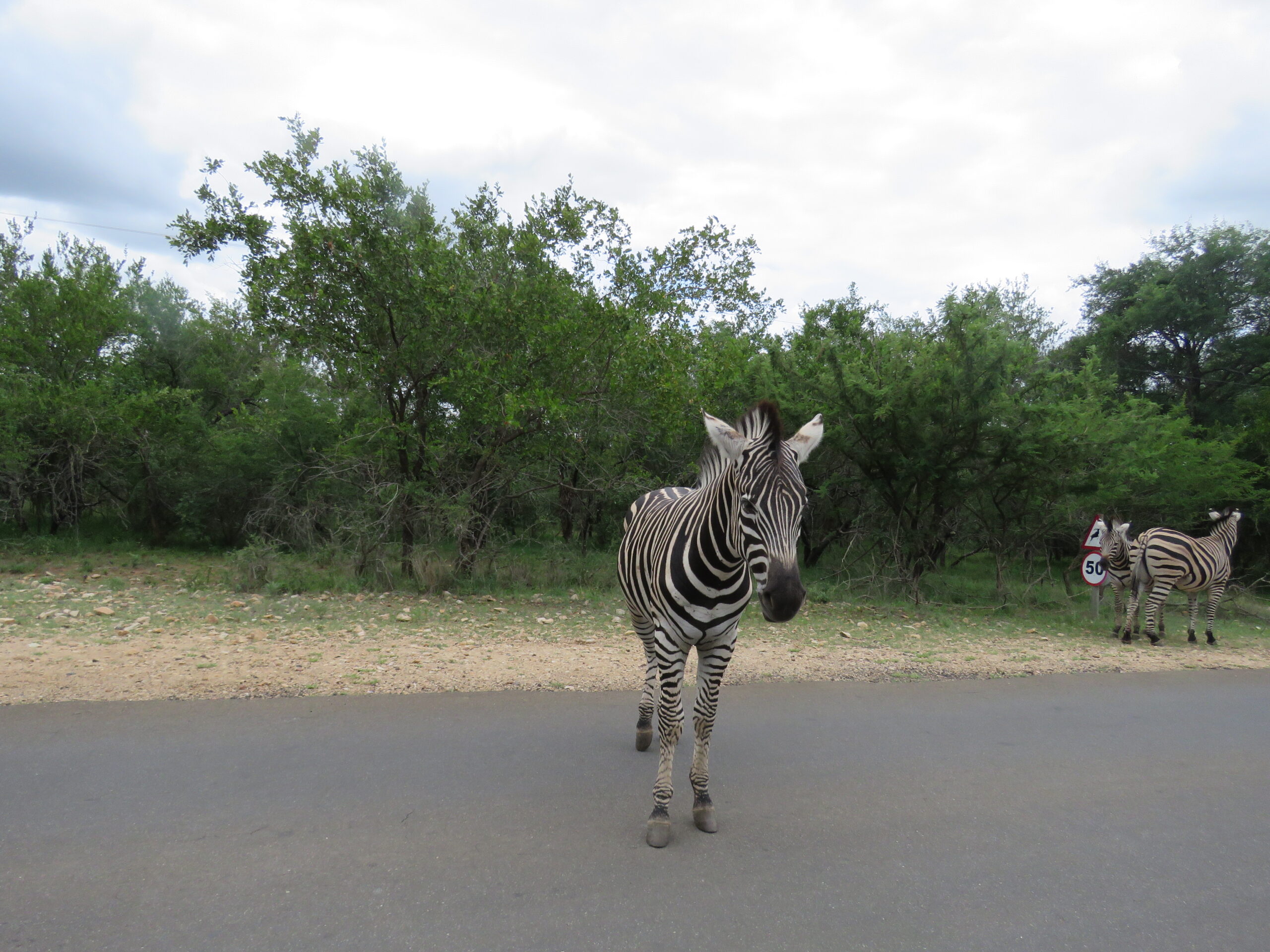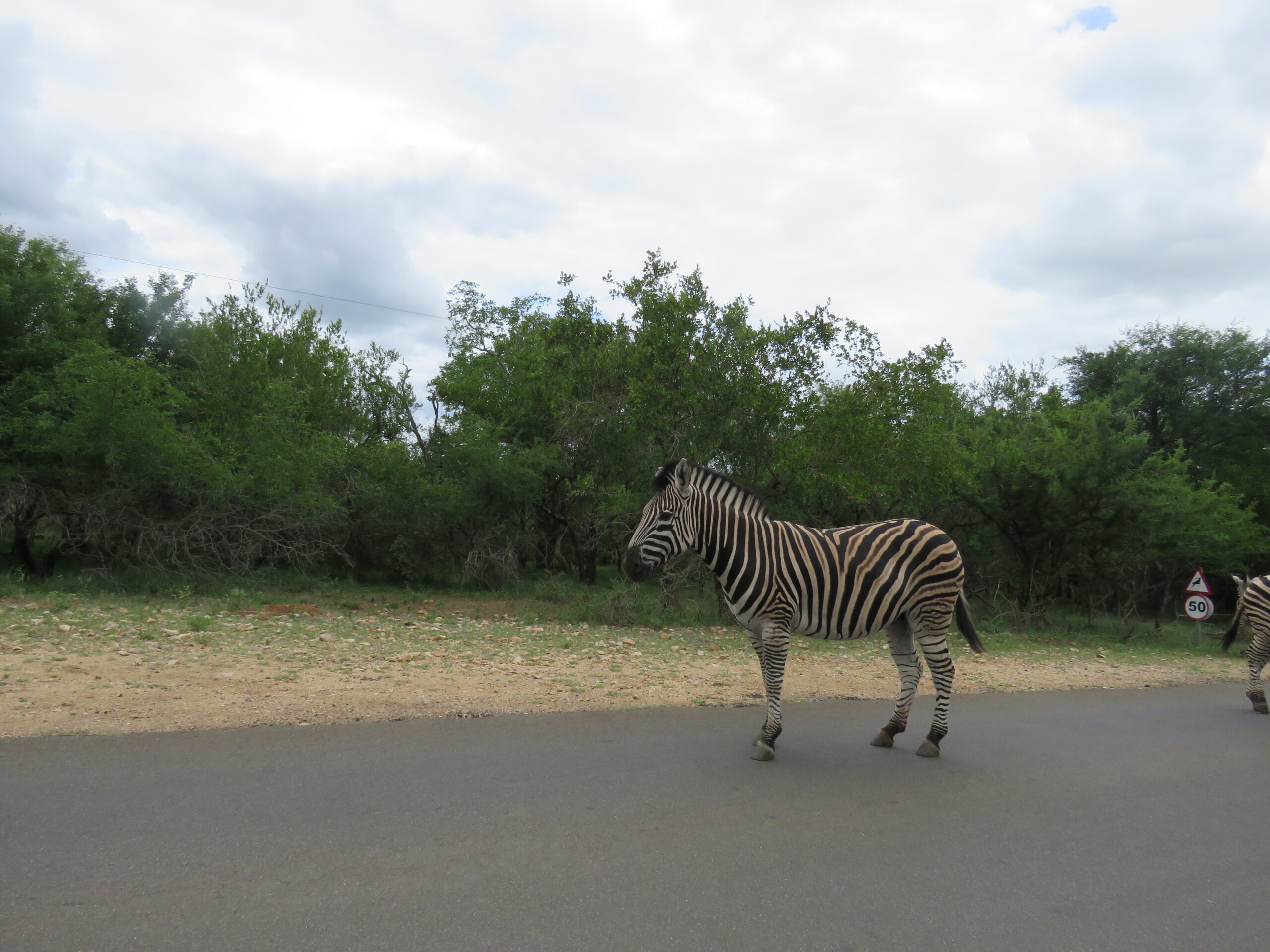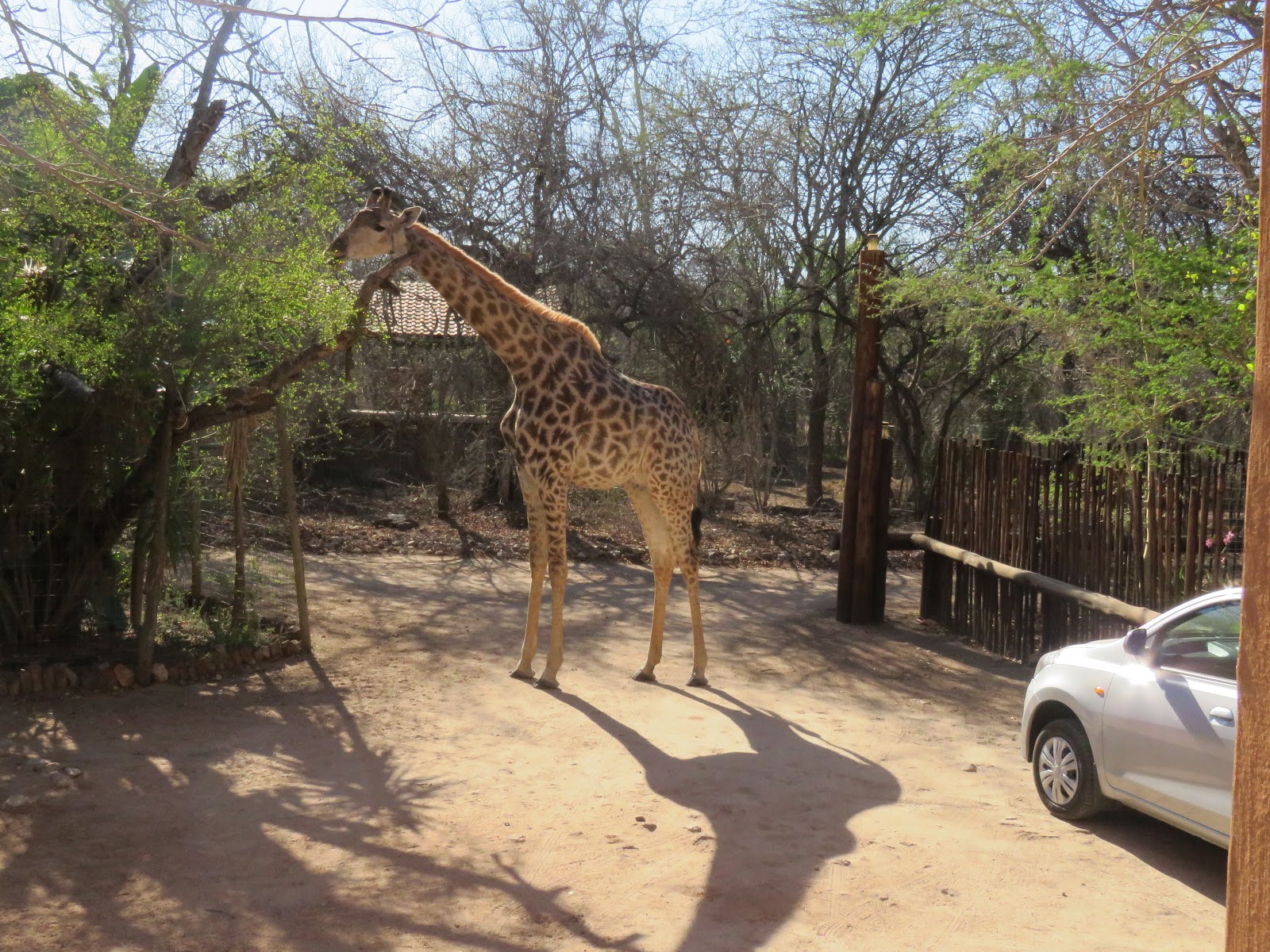
What a weird coincidence it was this morning when I started to do the post, to be completed when we return from the dentist, Dr. Singh, in Malalane. I went to the year-ago bar to grab the photo to place at the bottom of today’s post. The heading read,
“Busy morning in the bush!… Trip to Malalane to the dentist and more…”
That’s what’s happening today, exactly one year later, as shown here. But another irony is that the first thing I saw this morning when coming out of the bedroom after getting ready for the day was as many, if not more, mongooses waiting for us in the garden (at the old house) as shown in that post.
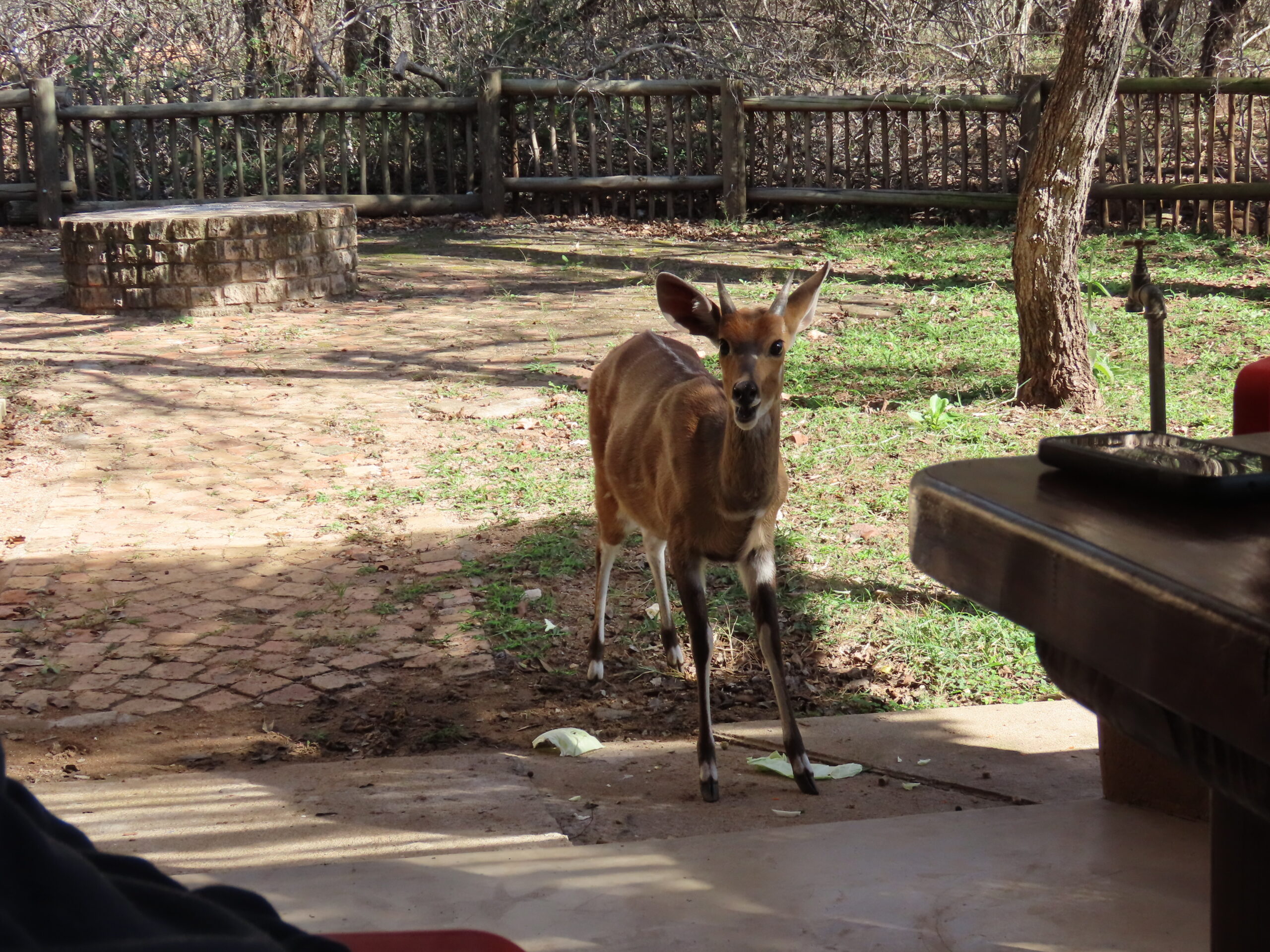
The only difference was that at that time, we gave them eggs. Now, we provide them with paloney, cut into little pieces, which ensures every one of them gets something. There were always a few mongooses with the eggs that didn’t get a taste. The paloney I’d cut into pieces, the size of their little heads was enough to ensure each one gets at least one bite. No one is left out.
We find our lives are filled with weird coincidences, most often revolving around events, dates, and places. How peculiar it is! Does it have something to do with the fact that our lives consist of various experiences that we’re bound to encounter similar situations? Who knows? I guess we’ll never figure it out.
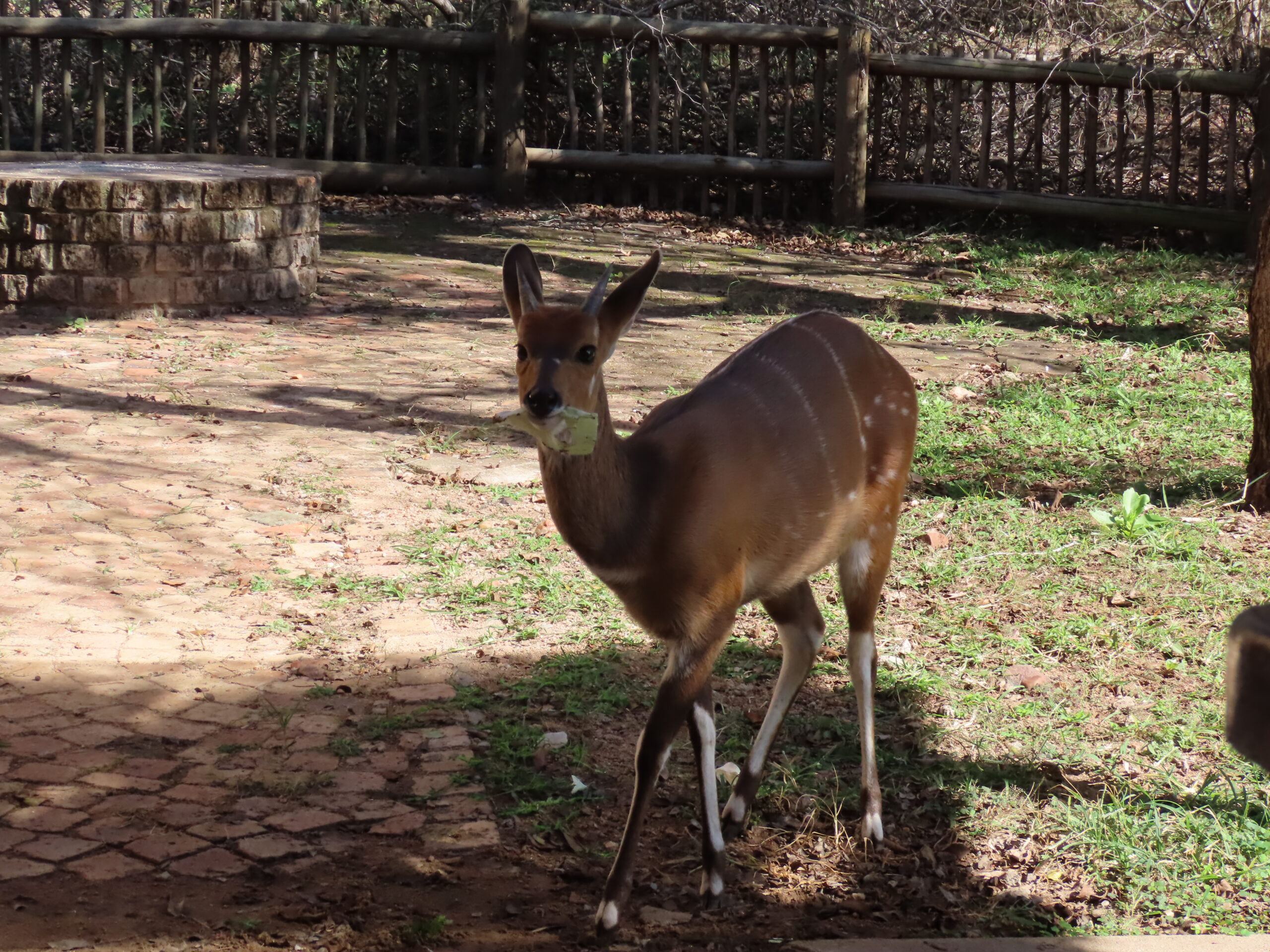
History is filled with amazing coincidences outlined on this website, such as:
- Mark Twain’s birth and death coincide with Halley’s Comet.
- Stephen Hawking shares his birth and death dates with Galileo and Einstein, respectively.
- Political adversaries Thomas Jefferson and John Adams died within hours of each other—on July 4th.
- Anthony Hopkins happened upon a signed copy of the book he was searching for in a train station.
- John Wilkes Booth’s brother saved Abraham Lincoln’s son from death.
- And that same son of Lincoln’s witnessed three presidential assassinations.
- An engaged couple discovered their parents almost married one another.
- One woman survived the Titanic, Britannic, and Olympic shipwrecks.
- The first and last battles of the Civil War were fought next to the same man’s property—in different towns.
- The first and last soldiers killed in WWI are buried next to each other.
For details on the above coincidences, and more, please click here. The stories surrounding the above are pretty interesting.
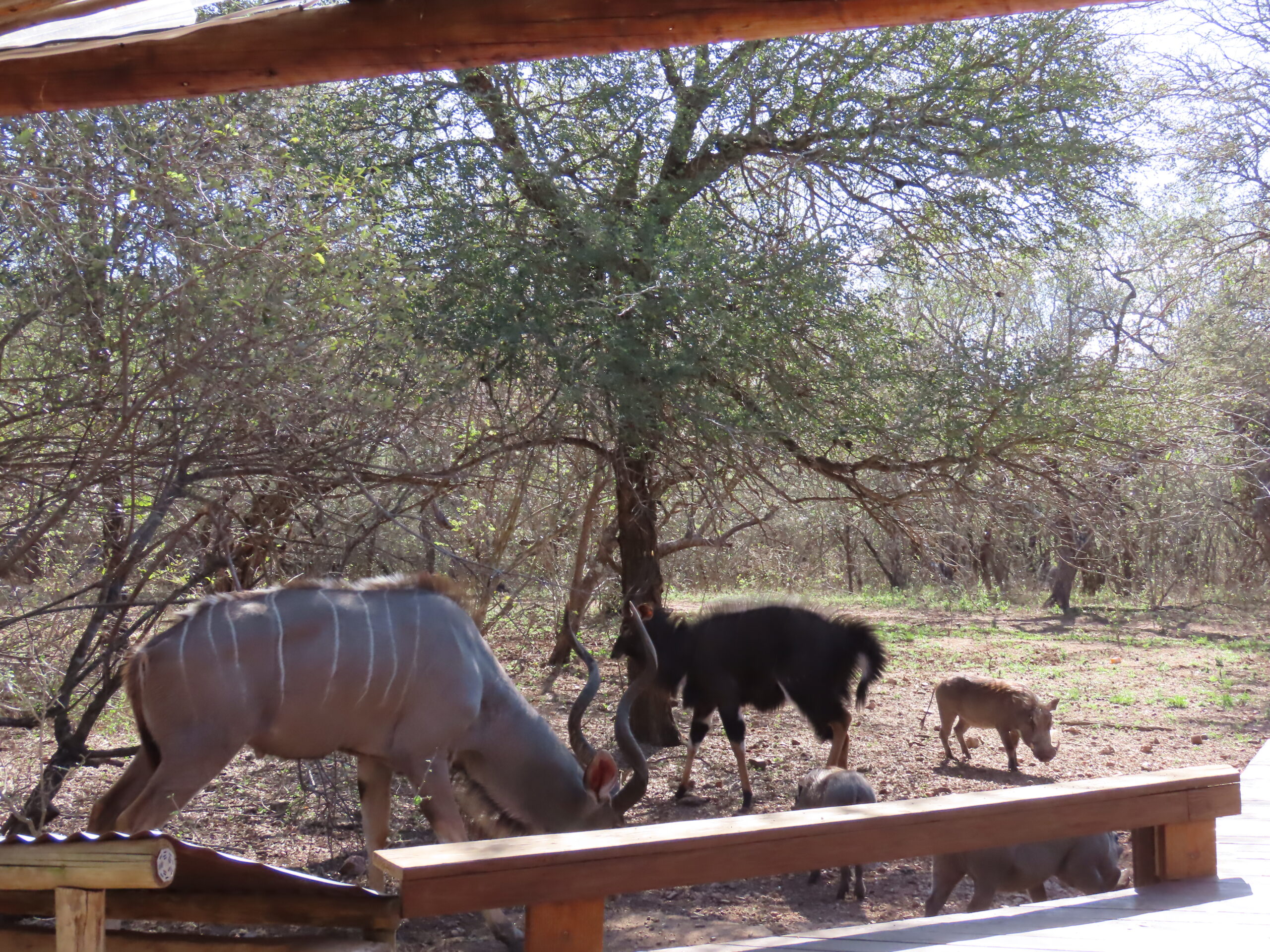
Today we drove to Dr. Singh’s office in Malalane (also spelled Malelane). Wouldn’t you know that an accident on the N4 backed up traffic for 25 minutes from Marloth Park to Malalane? Thank goodness, Tom suggested we leave at 9:00 am for our 10:00 am appointment. We walked in the door to Dr. Singh’s office exactly at 10:00 am. (Even that was somewhat of a coincidence).
Tom had his two implants seated, which looked like his normal teeth. He’s relieved to have the big gap where two teeth were pulled many months ago, finally no longer visible when he smiles, laughs or talks. He doesn’t feel any pain or discomfort.
Alas, I have to have the same thing done. My painful tooth, easily visible when I open my mouth since it’s the fourth tooth from my front tooth, has to be pulled. Dr. Singh explained it had already had a root canal (many years ago in the US), and repeating root canals have a poor success rate. I now have an abscess which is why it’s hurting so much, which I’d expected.
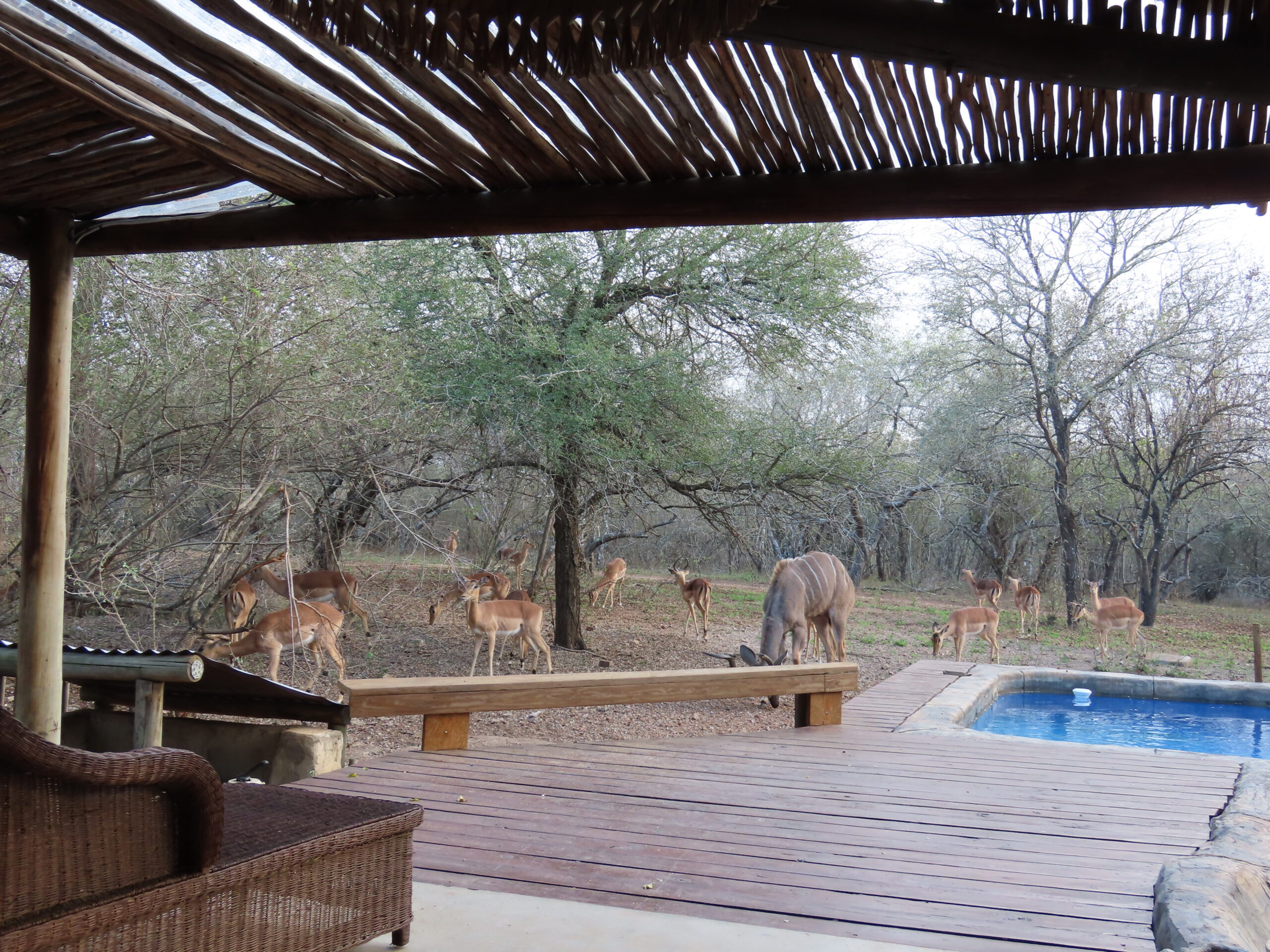
The only alternative is to pull the tooth and have an implant after the bone heals. I cringed when I heard this. The last time I had a tooth pulled was last September, resulting in an excruciating dry socket. Dr. Singh had gone on holiday, and I suffered dearly for three weeks when I finally visited another dentist to work on the dry socket.
Statistics show that certain people are prone to dry sockets. That’s me. Oh, I don’t want to go through that again! I started antibiotics today but couldn’t make the appointment for the extraction until after returning from Zambia/Botswana on August 27th. It was too risky to do it before we left if I had complications like I’d had last time. We don’t want to be away while I am in pain.
By taking antibiotics now, a must, the pain may return by the time we leave South Africa on August 20. If that’s the case, I’ll have to go on another round of antibiotics that only help an abscess for a short time. I would have refused antibiotics if I could have the tooth pulled in the next week, but it will take three days to make the temporary bridge to see me through the three months necessary to wait for the final implant.
I assure you, during those three days while waiting for the temporary to be made, I won’t be going out and about for anything. I have no desire to look like a “toothless wonder” while waiting for the temporary tooth. Tom said, “You could wear a face mask if a social thing comes up!” Hahaha. I won’t be going anywhere that week!
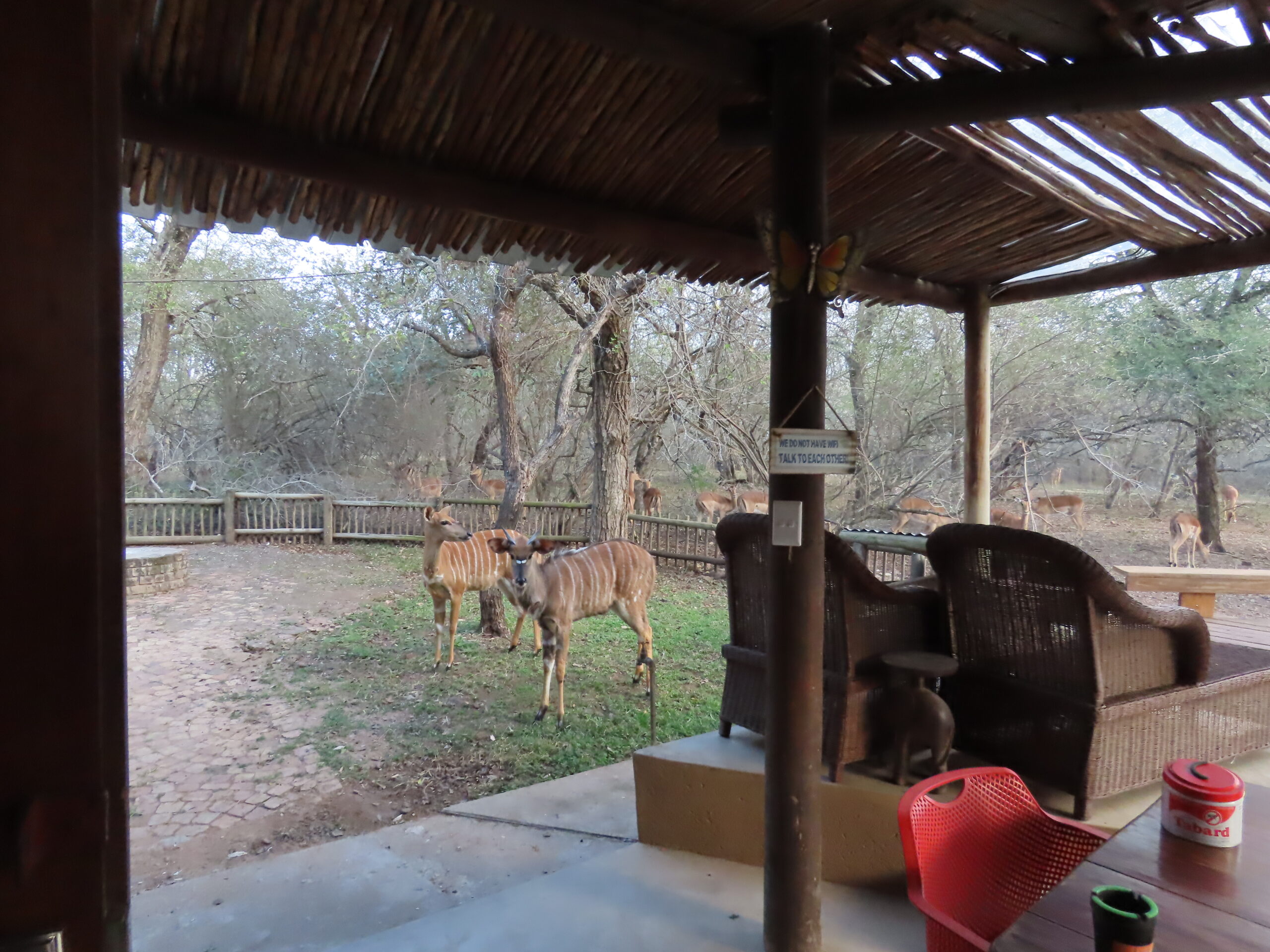
This morning while we were gone, Louise and Danie dropped off a better-working refrigerator for the kitchen, and we’re thrilled! Louise unloaded and reloaded all of our food, and the new refrigerator section is roomier and easier to use. I couldn’t be more delighted and thanked them profusely. Soon, the washer part will come in, and the repair guy will install that. Then, all of our appliances will be working.
Tonight, we’re meeting Louise, Danie, and her parents, Estelle and Johan, for dinner at Jabula. David reserved a spot for us at the bar and our favorite table for six on the veranda. It’s a gorgeous day and shouldn’t be too cold outdoors for dining. We’ll undoubtedly have another fantastic evening at our favorite spot in Marloth Park.
Be well.
Photo from one year ago today, July 29, 2021:
